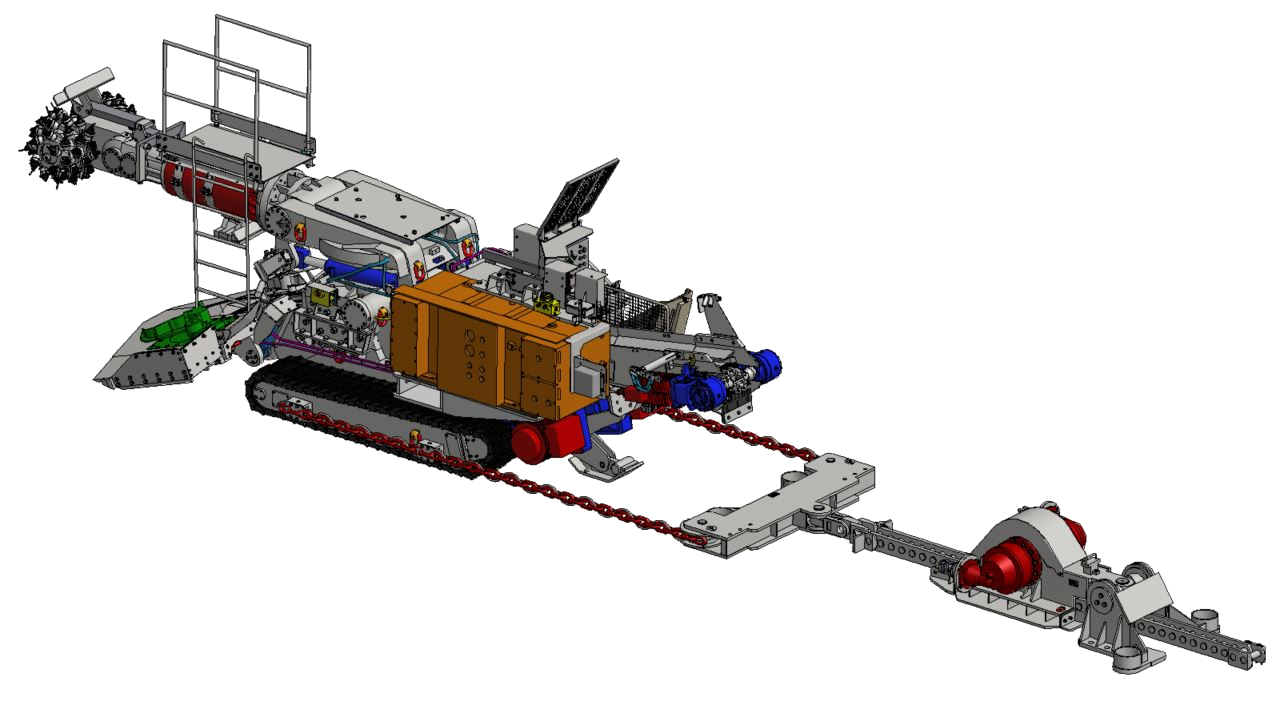
Roadheaders work supporting device WPK-2.VT can be operated in underground mines in the fields without and with methane content categorized as a, b or c class of methane explosion hazard as well as A or B class of coal dust explosion hazard. Supporting device WPK-2.VT is used to support the movement of the roadheader in the hollow workings to the maximum value of -35°, on slopes exceeding the range of permissible independent operation of the roadheader. The device is an incomplete machine, intended for use as one unit together with the roadheader and the appropriate control system as part of the Integrated System of Ancestral Machines.
| Max pulling force | 200 kN | ||
| Maximum working range (15 bars) | 30 m | ||
| Max pulling speed | 0,04 m/s | ||
| Maximum range of drilling without rebuilding the hitch frame | approx.. 20 m | ||
| Nominal working pressure | 14,5 MPa | ||
| Hydraulic power unit performance | 130 l/min | ||
| Maximum twist of the drawing bar (in the horizontal direction) on the hitch frame | ±20° | ||
Roadheaders work supporting device WPK-2.VT is mounted above the roadheader. The lower end of the pull rod created from the supporting rails is articulated with the roadheader’s sling, which is connected with the roadheader's chassis by the chain. The stabilizing element for the entire system is a hitch frame anchored to the floor and/or supported with expansion posts. A pulling unit is articulated to the frame, in which a carrying rod made from bearing strips is guided. The pulling rod movement is done by turning the toothed wheel of the pulling unit, meshed with the pin ladder of the bearing strips. The gear wheel is driven by two drive units that form planetary-worm gears driven by hydraulic motors. The hydraulic motors are powered by the hydraulic unit included in the device. The rails are positively guided in the towing unit channel. The articulated mounting of the towing unit is causing that the connection between the joint and sling of the roadheader is always in the line (parallel to the pulling force). As a result, the occurrence of bending forces to the lifting rod and transverse forces to the pulling unit are eliminated.